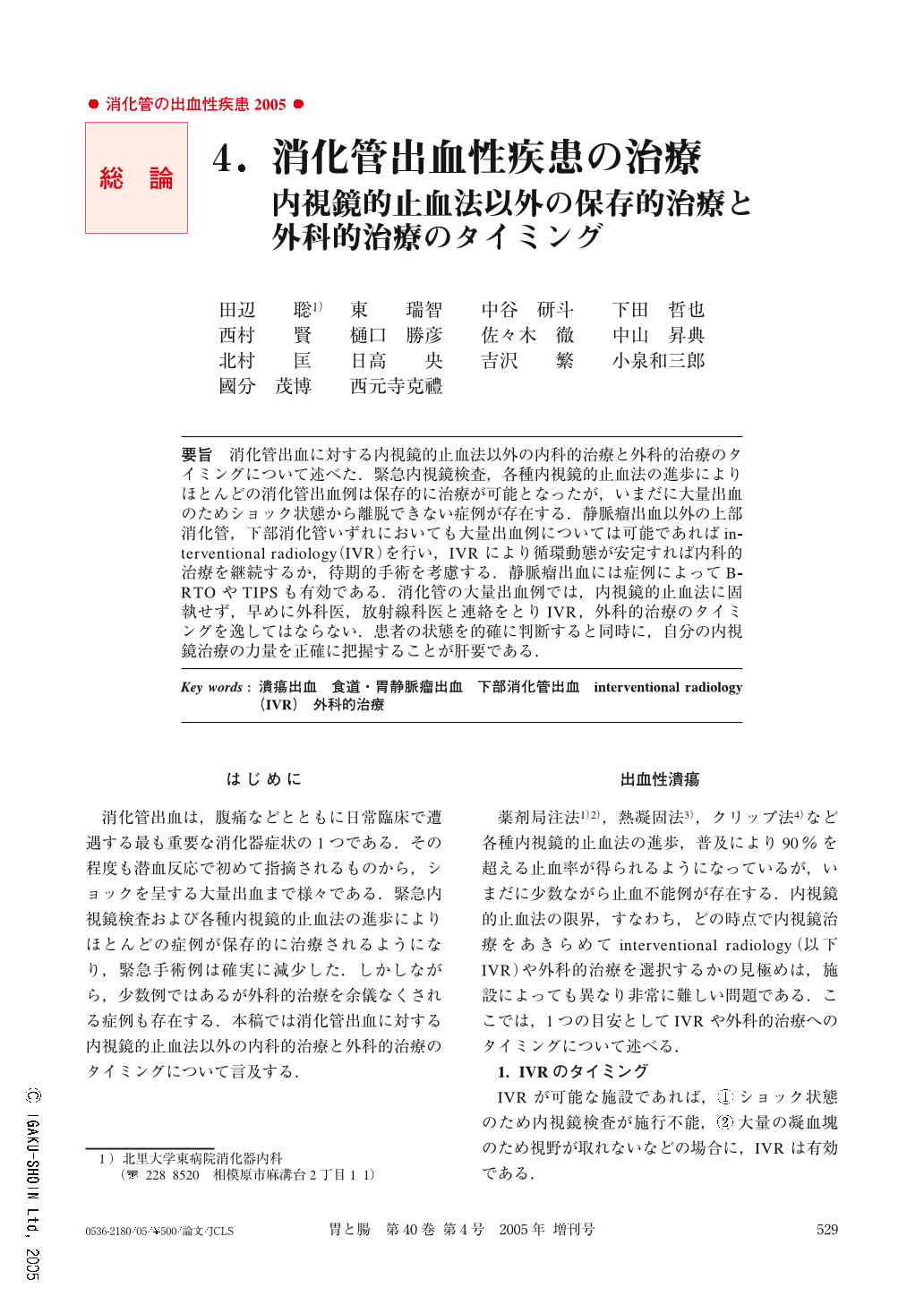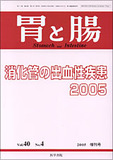Japanese
English
- 有料閲覧
- Abstract 文献概要
- 1ページ目 Look Inside
- 参考文献 Reference
要旨 消化管出血に対する内視鏡的止血法以外の内科的治療と外科的治療のタイミングについて述べた.緊急内視鏡検査,各種内視鏡的止血法の進歩によりほとんどの消化管出血例は保存的に治療が可能となったが,いまだに大量出血のためショック状態から離脱できない症例が存在する.静脈瘤出血以外の上部消化管,下部消化管いずれにおいても大量出血例については可能であればinterventional radiology(IVR)を行い,IVRにより循環動態が安定すれば内科的治療を継続するか,待期的手術を考慮する.静脈瘤出血には症例によってB-RTOやTIPSも有効である.消化管の大量出血例では,内視鏡的止血法に固執せず,早めに外科医,放射線科医と連絡をとりIVR,外科的治療のタイミングを逸してはならない.患者の状態を的確に判断すると同時に,自分の内視鏡治療の力量を正確に把握することが肝要である.
Owing to advances in endoscopic hemostasis, many cases of gastrointestinal bleeding can now be controlled by conservative therapy, but some patients with shock due to massive bleeding still require surgical treatment. In patients with massive bleeding, interventional radiology (IVR) is recommended. IVR is particularly useful in patients with shock due to massive bleeding who cannot undergo endoscopic procedures because of massive clots. Once the patient's general condition has stabilized after IVR, conservative therapy can be continued or elective surgery performed. Balloon-occluded retrograde transvenous obliteration (B-RTO) is useful for the treatment of gastric varices with gastro-renal shunts. Transjugular intrahepatic portosystemic shunting (TIPS) may be the treatment of choice for patients with intractable esophagogastric varices or refractory ascites. The general condition of patients should be evaluated in close contact with radiologists or surgeons. IVR or emergency surgery should be promptly performed in patients in whom hemorrhage cannot be controlled by endoscopic procedures.

Copyright © 2005, Igaku-Shoin Ltd. All rights reserved.


